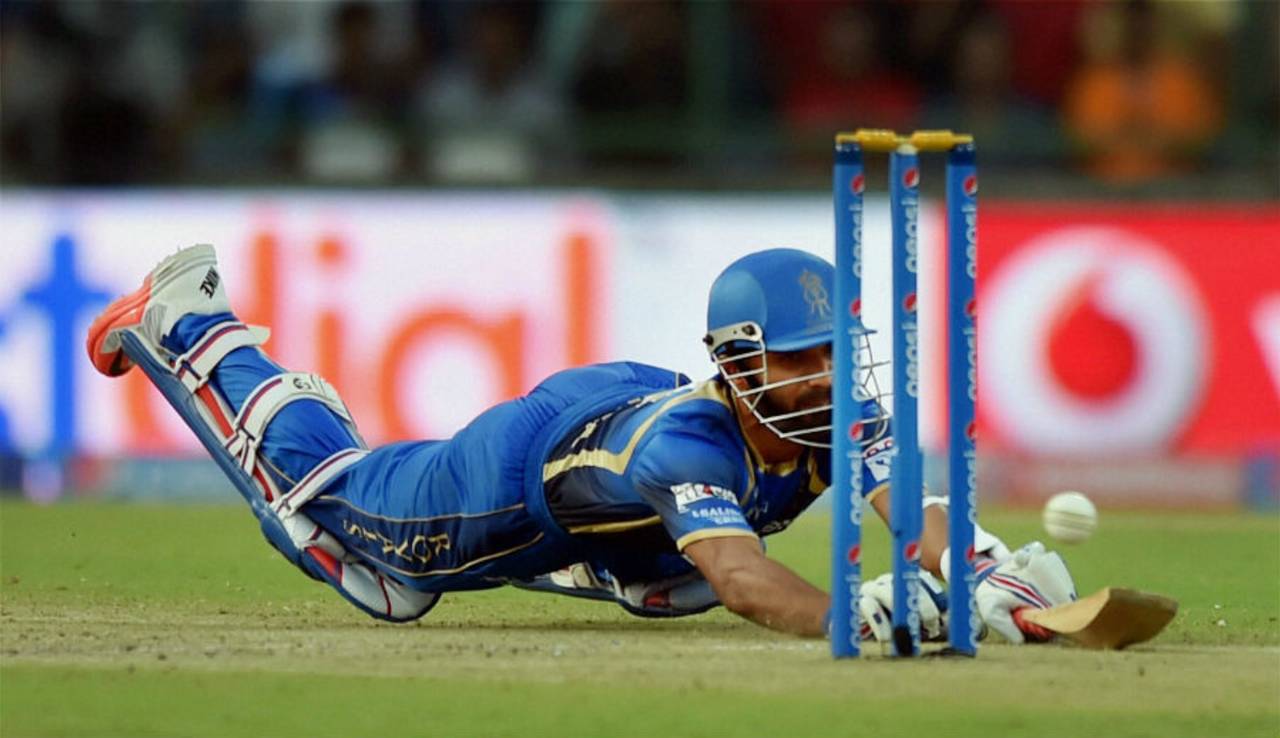One of the most significant changes in limited-overs batting with the advent of T20, the advancement in bat technology and general modern-ness has been the
the declining value of the single. Batsmen back themselves more now. They make a mockery of the old-fashioned making of every ball count. They go from strike rates of 70 to 100 in ODIs and 100 to 150 in T20s in no time at all. It doesn't matter to them how slow they go in the first half of their innings.
There are exceptions to the rule. AB de Villiers need not worry about the singles early on in his innings, but he does, which is why he is a rare beast in limited-overs cricket. Other good batsmen, though, back themselves to clear the field in a concentrated and calculated manner later on in the innings. Some don't, and play low-percentage shots at the sight of a few dots early on in the innings. Suresh Raina is one of them. Some do but don't have the big shots to shock the opposition in that late attack. These batsmen need to bat the old-fashioned way.
Ajinkya Rahane might be one of them.
Along with M Vijay, Rahane was India's best overall Test batsman in the 13 away-Test ordeal over the last year and a half. In limited-overs cricket, though, he is still evolving. One of the missing links in his batting was the big innings, which he began putting together when given the responsibility to open the innings in England. Still he can give the impression he is playing too many shots, but when you look up at the board, he is going only about a run a ball. A little higher in T20s, and lower in ODIs.
This is a little strange for a batsman who has surprised all by how well he has kept the runs coming in Test cricket. Vijay and he had the highest boundary percentage among Indian batsmen over those 13 Tests. The missing link in limited-overs cricket for Rahane is the singles once the field is spread out, once those boundaries are not readily available. In the recently concluded World Cup Rahane failed to score off 145 of the 250 balls he faced. At 58% this was the highest among Indian batsmen. Even Rohit Sharma, much maligned when it comes to dot balls, went at 55.7% despite batting in the first 10 overs when you are likely to face more dots than ever in an ODI innings. Among regular Nos 4 from regular ODI teams this World Cup, only the out-of-form Ross Taylor and Marlon Samuels had a worse dot-ball percentage than Rahane. Even Misbah-ul-Haq did better. And Rahane hardly looked out of form either.
Seventeen batsmen so far have faced a total of 50 balls or more this IPL. Only Dwayne Smith and Virat Kohli have gone slower than Rahane. Rahane's 93 runs off 86 balls are not to be sniggered at. He is doing a job for his team, a team that has won three games out of three. On a personal level, though, he will be a touch disappointed. While Kohli and Smith have looked a little out of form, Rahane hasn't. He has been hitting the ball well but too often for his liking he has been hitting it straight to the fielders. What will disturb him a little is that all three times he has got out he has done so under pressure of dot balls and while trying to play big shots, which haven't come off.
Thirty-seven of the 86 balls that Rahane has faced have gone unscored off. Only Corey Anderson has faced more dots, but he has hit seven more boundaries than Rahane to have a much better strike rate. Rahane's role at Rajasthan Royals is more like that of Gautam Gambhir's at Kolkata Knight Riders. To bat deep into an innings and let the big hitters around him flourish. Gambhir has faced a similar number of dots to Rahane: 36 out of 89. However, he has scored at a much higher strike rate of 129.21. They have taken an equal number of ones, but Gambhir's well-timed shots have avoided fielders better than Rahane's. he has hit 14 fours to Rahane's six.
For a batsman who can't all of a sudden hit 20 in one over, Rahane is facing too many dot balls. While he is still a very good limited-overs batsman, he is far from complete. In modern limited-overs cricket you need either those boundaries or you need to keep the dot balls to a minimum. To go from very good to complete Rahane will have to bring either of the two, or a combination thereof, into his game. Over the last two years Rahane has kept evolving as a batsman; this is just another part of that process.
